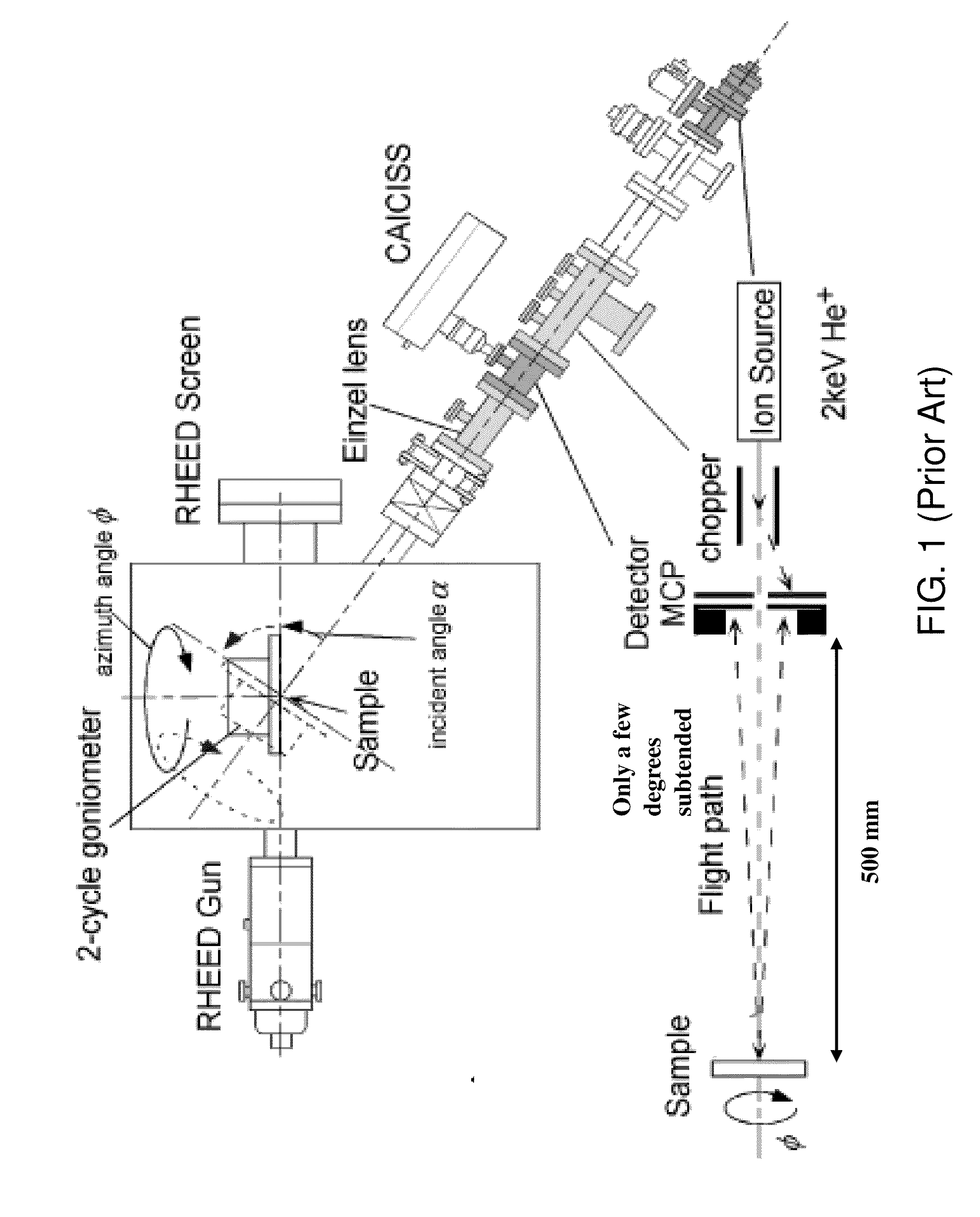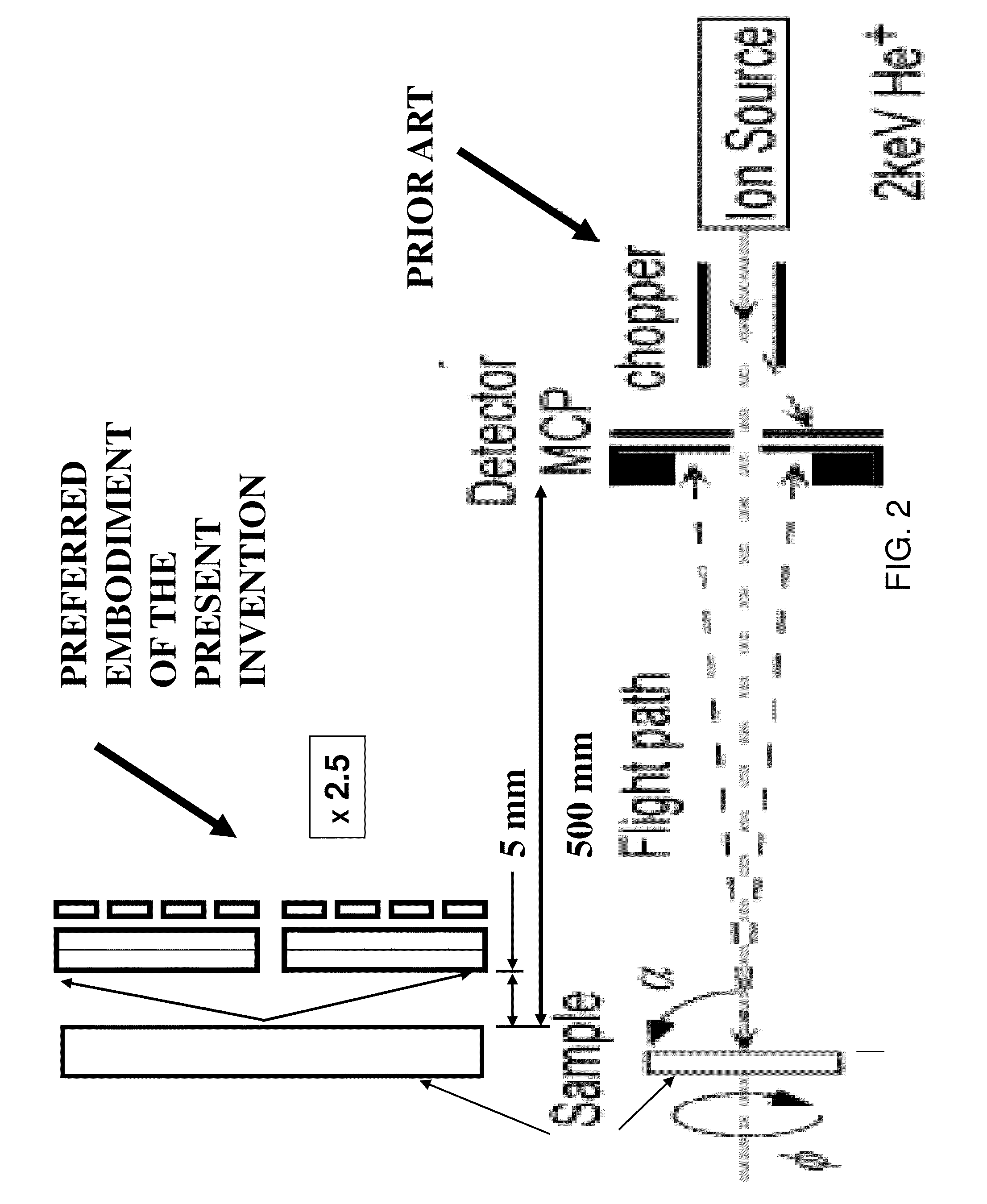Time-of-flight spectrometry and spectroscopy of surfaces
a mass spectrometry and surface technology, applied in the field of mass spectrometry, can solve the problems of preventing secondary electron microscopy from being useful as secondary electron microscopy, unable to capture a significant fraction of diffuse secondary particle emission, and the physical scale of these instruments is a huge drawback
- Summary
- Abstract
- Description
- Claims
- Application Information
AI Technical Summary
Benefits of technology
Problems solved by technology
Method used
Image
Examples
Embodiment Construction
[0040]It is readily apparent to the skilled artisan that various embodiments and modifications can be made to the invention disclosed in this Application without departing from the scope and spirit of the invention.
[0041]As used herein “a” or “an” means one or more than one unless expressly stated to the contrary or otherwise clear from the context. For example, reference to “a species” means one species or more than one species.
[0042]As used herein “primary species” or “primary particle” is defined as energetic particles used to impinge a sample. Such primary species can be a photon, a charged or neutral atomic, molecular, nanoparticulate, or cluster of elements of any kind and any combination thereof.
[0043]As used herein “secondary species” or “secondary particle” is defined as electrons, photons, recoiled atoms, recoiled ions (both atomic and molecular), recoiled molecules, sputtered atoms, sputtered molecules, sputtered ions (both atomic and molecular), backscattered atoms, back...
PUM
 Login to View More
Login to View More Abstract
Description
Claims
Application Information
 Login to View More
Login to View More - R&D
- Intellectual Property
- Life Sciences
- Materials
- Tech Scout
- Unparalleled Data Quality
- Higher Quality Content
- 60% Fewer Hallucinations
Browse by: Latest US Patents, China's latest patents, Technical Efficacy Thesaurus, Application Domain, Technology Topic, Popular Technical Reports.
© 2025 PatSnap. All rights reserved.Legal|Privacy policy|Modern Slavery Act Transparency Statement|Sitemap|About US| Contact US: help@patsnap.com



